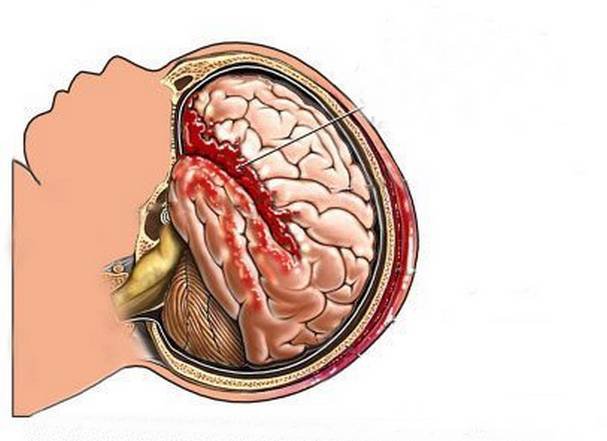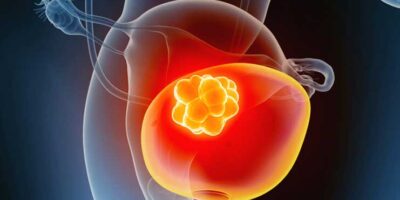The Aneurysmal Subarachnoid Hemorrhage (aSAH) Market is focused on the treatment and management of subarachnoid hemorrhage (SAH) caused by ruptured cerebral aneurysms. Aneurysmal SAH is a life-threatening condition requiring immediate medical attention, and its market encompasses various treatment modalities, including surgical interventions, medications, and medical devices aimed at improving outcomes for patients.
Market Overview:
Aneurysmal subarachnoid hemorrhage (aSAH) is a type of stroke that occurs when an aneurysm, or an abnormal bulge in a blood vessel in the brain, ruptures, leading to bleeding in the subarachnoid space. aSAH accounts for a small percentage of all strokes but is associated with high mortality and morbidity. Rapid diagnosis and treatment are critical for improving survival rates and long-term recovery.
Market Size and Growth:
The global market for aSAH treatment is expanding due to the growing prevalence of aneurysms, advances in treatment options, and increasing awareness of the condition.
- Market Value: The market is valued at several billion dollars globally, driven by the increasing incidence of cerebrovascular diseases, improvements in diagnostic imaging, and growing adoption of minimally invasive surgical techniques.
- CAGR: The market is expected to grow at a compound annual growth rate (CAGR) of 5-7% over the next decade as technological innovations and improved healthcare infrastructure enhance treatment outcomes.
Key Market Drivers:
- Rising Prevalence of Cerebral Aneurysms:
- Aging Population: The risk of developing cerebral aneurysms increases with age, particularly in individuals over the age of 50, contributing to the rising incidence of aSAH.
- Lifestyle Factors: Smoking, hypertension, and alcohol use are significant risk factors for the development and rupture of cerebral aneurysms, driving the demand for effective treatments.
- Advancements in Surgical Techniques:
- Minimally Invasive Procedures: Endovascular coiling and flow-diverting stents are replacing traditional surgical clipping in many cases, offering less invasive options with shorter recovery times and fewer complications.
- Improved Outcomes: Advances in microsurgical techniques and neuroendovascular devices have significantly improved patient outcomes, reducing mortality and disability rates associated with aSAH.
- Technological Innovations in Diagnostic Imaging:
- Enhanced Detection: Advances in imaging technologies, such as computed tomography angiography (CTA), magnetic resonance angiography (MRA), and digital subtraction angiography (DSA), have improved the early detection of cerebral aneurysms, allowing for timely intervention before rupture occurs.
- Non-Invasive Monitoring: Development of portable and wearable devices for monitoring intracranial pressure and cerebral blood flow is enhancing post-operative care and reducing the risk of complications.
- Rising Awareness and Early Diagnosis:
- Public Health Campaigns: Increased awareness of the symptoms of aneurysmal subarachnoid hemorrhage, such as sudden severe headache, nausea, and loss of consciousness, is leading to earlier diagnosis and intervention.
- Healthcare Access: Expanding access to advanced neuroimaging and specialized stroke centers in emerging markets is improving diagnosis rates and driving demand for aSAH treatments.
Trends:
- Shift Toward Minimally Invasive Endovascular Procedures:
- Coiling vs. Clipping: Endovascular coiling is becoming the preferred treatment for aSAH due to its minimally invasive nature and lower complication rates compared to traditional surgical clipping.
- Flow-Diverting Stents: These devices are increasingly used to treat large or complex aneurysms that are not amenable to coiling or clipping, offering a new option for patients with high-risk aneurysms.
- Focus on Early Intervention and Preventive Treatment:
- Screening for Unruptured Aneurysms: Increased use of imaging for screening individuals at high risk of aneurysms is leading to earlier detection and preventive treatment before rupture occurs.
- Preventive Medication: Ongoing research into neuroprotective drugs and vasospasm management aims to reduce the risk of secondary brain injury following aSAH.
- Improved Post-Operative Care:
- ICU Monitoring: Intensive care unit (ICU) protocols for monitoring intracranial pressure and managing complications such as hydrocephalus and vasospasm are improving patient outcomes after aSAH surgery.
- Neurorehabilitation: Advances in neurorehabilitation therapies, including physical therapy, cognitive rehabilitation, and speech therapy, are enhancing recovery and quality of life for aSAH survivors.
- Development of Novel Therapies:
- Stem Cell Research: Research into the use of stem cells for repairing brain tissue damaged by aSAH is a growing area of interest, with potential to revolutionize treatment and recovery.
- Gene Therapy: Gene therapy targeting the molecular mechanisms underlying aneurysm formation and rupture is an emerging field, with the potential to prevent aneurysms from developing or worsening.
Challenges:
- High Mortality and Morbidity Rates:
- Delayed Diagnosis: Delays in recognizing aSAH symptoms and accessing appropriate treatment can lead to poor outcomes, with high rates of mortality and long-term disability.
- Risk of Complications: Secondary complications, such as cerebral vasospasm, re-bleeding, and hydrocephalus, remain significant challenges in the treatment of aSAH, often leading to poor prognosis.
- Cost of Treatment:
- Expensive Interventions: The cost of surgical interventions, particularly endovascular coiling and flow-diverting stents, can be prohibitive, especially in low- and middle-income countries.
- Healthcare Access: Limited access to specialized stroke care centers and neurosurgical expertise in many regions restricts timely and effective treatment for aSAH patients.
- Limited Awareness in Emerging Markets:
- Underdiagnosis: In many emerging markets, a lack of awareness and access to diagnostic imaging leads to underdiagnosis and delayed treatment of cerebral aneurysms and aSAH.
- Training and Expertise: A shortage of trained neurosurgeons and endovascular specialists in low-income regions limits the availability of advanced treatment options.
Click Here, To Get Free Sample Report https://stringentdatalytics.com/sample-request/aneurysmal-subarachnoid-hemorrhage-market/15686/
Market Segmentations:
Global Aneurysmal Subarachnoid Hemorrhage Market: By Company
Edge Therapeutics
Actelion Pharmaceuticals
Arbor Pharmaceuticals
Mayfield Brain & Spine
Europa Group
GE
Philips
Siemens
Trivitron
Toshiba
Global Aneurysmal Subarachnoid Hemorrhage Market: By Type
Computed Tomography (CT) Scan
Magnetic Resonance Imaging (MRI)
Lumbar Puncture
Xanthochromia
Cerebral Angiography
Transcranial Doppler Ultrasound
Global Aneurysmal Subarachnoid Hemorrhage Market: By Application
Hospitals
Clinics
Others
Global Aneurysmal Subarachnoid Hemorrhage Market: Regional Analysis
The regional analysis of the global Aneurysmal Subarachnoid Hemorrhage market provides insights into the market’s performance across different regions of the world. The analysis is based on recent and future trends and includes market forecast for the prediction period. The countries covered in the regional analysis of the Aneurysmal Subarachnoid Hemorrhage market report are as follows:
North America: The North America region includes the U.S., Canada, and Mexico. The U.S. is the largest market for Cold-chain Pharma in this region, followed by Canada and Mexico. The market growth in this region is primarily driven by the presence of key market players and the increasing demand for the product.
Europe: The Europe region includes Germany, France, U.K., Russia, Italy, Spain, Turkey, Netherlands, Switzerland, Belgium, and Rest of Europe. Germany is the largest market for Cold-chain Pharma in this region, followed by the U.K. and France. The market growth in this region is driven by the increasing demand for the product in the automotive and aerospace sectors.
Asia-Pacific: The Asia-Pacific region includes Singapore, Malaysia, Australia, Thailand, Indonesia, Philippines, China, Japan, India, South Korea, and Rest of Asia-Pacific. China is the largest market for Cold-chain Pharma in this region, followed by Japan and India. The market growth in this region is driven by the increasing adoption of the product in various end-use industries, such as automotive, aerospace, and construction.
Middle East and Africa: The Middle East and Africa region includes Saudi Arabia, U.A.E, South Africa, Egypt, Israel, and Rest of Middle East and Africa. The market growth in this region is driven by the increasing demand for the product in the aerospace and defense sectors.
South America: The South America region includes Argentina, Brazil, and Rest of South America. Brazil is the largest market for Cold-chain Pharma in this region, followed by Argentina. The market growth in this region is primarily driven by the increasing demand for the product in the automotive sector.
Click Here, To Buy Premium Report https://stringentdatalytics.com/purchase/aneurysmal-subarachnoid-hemorrhage-market/15686/?license=single
The report has helped our clients:
- To describe and forecast the Market size, on the basis of various segmentations and geography, in terms of value and volume
- To measure the changing needs of customers/industries
- To provide detailed information regarding the drivers, restraints, opportunities, and challenges influencing the growth of the Market
- To gain competitive intelligence and uncover new opportunities
- To analyse opportunities in the Market for stakeholders by identifying high-growth segments in Market
- To strategically profile key players and provide details of the current competitive landscape
- To analyse strategic approaches adopted by players in the Market, such as product launches and developments, acquisitions, collaborations, contracts, expansions, and partnerships
About Stringent Datalytics
Stringent Datalytics offers both custom and syndicated market research reports. Custom market research reports are tailored to a specific client’s needs and requirements. These reports provide unique insights into a particular industry or market segment and can help businesses make informed decisions about their strategies and operations.
Syndicated market research reports, on the other hand, are pre-existing reports that are available for purchase by multiple clients. These reports are often produced on a regular basis, such as annually or quarterly, and cover a broad range of industries and market segments. Syndicated reports provide clients with insights into industry trends, market sizes, and competitive landscapes. By offering both custom and syndicated reports, Stringent Datalytics can provide clients with a range of market research solutions that can be customized to their specific needs.
Contact Us
Stringent Datalytics
Contact No- +1 346 666 6655
Email Id- sales@stringentdatalytics.com




Leave a Reply